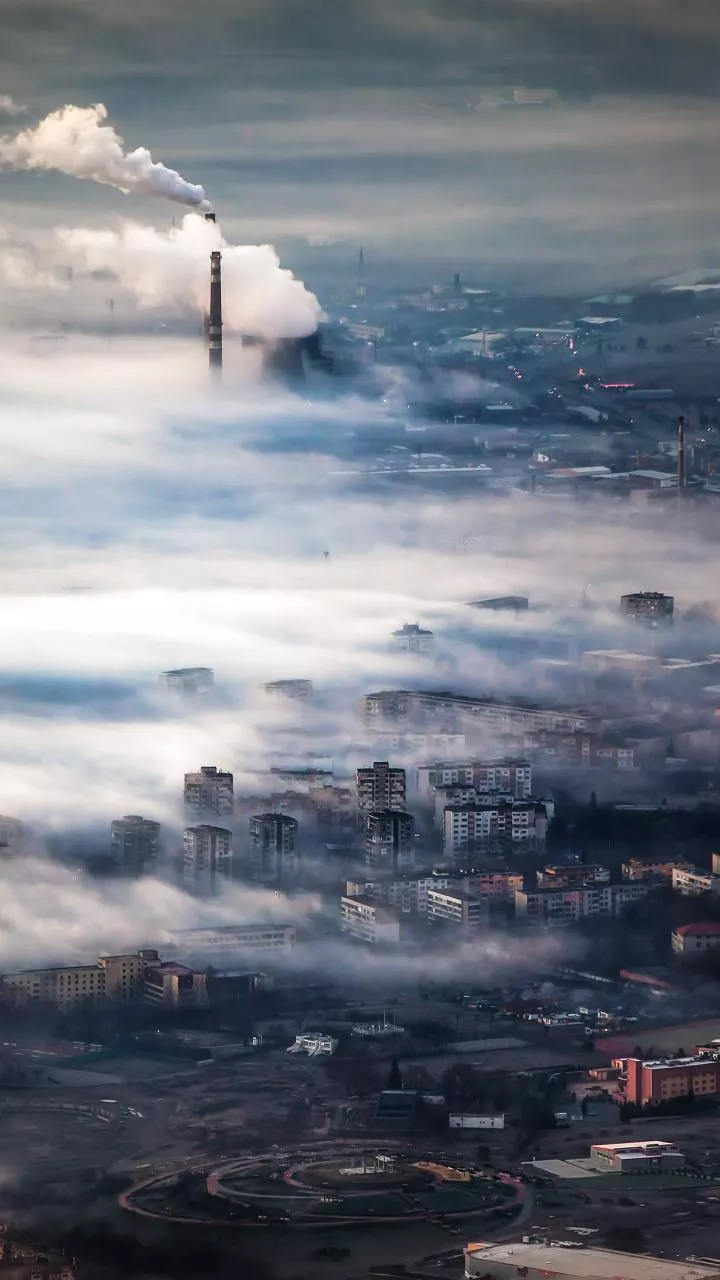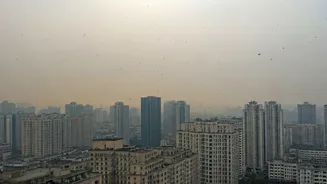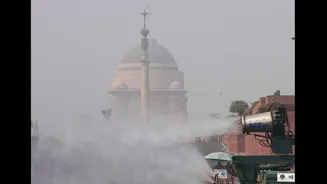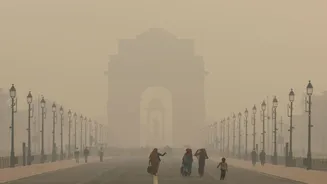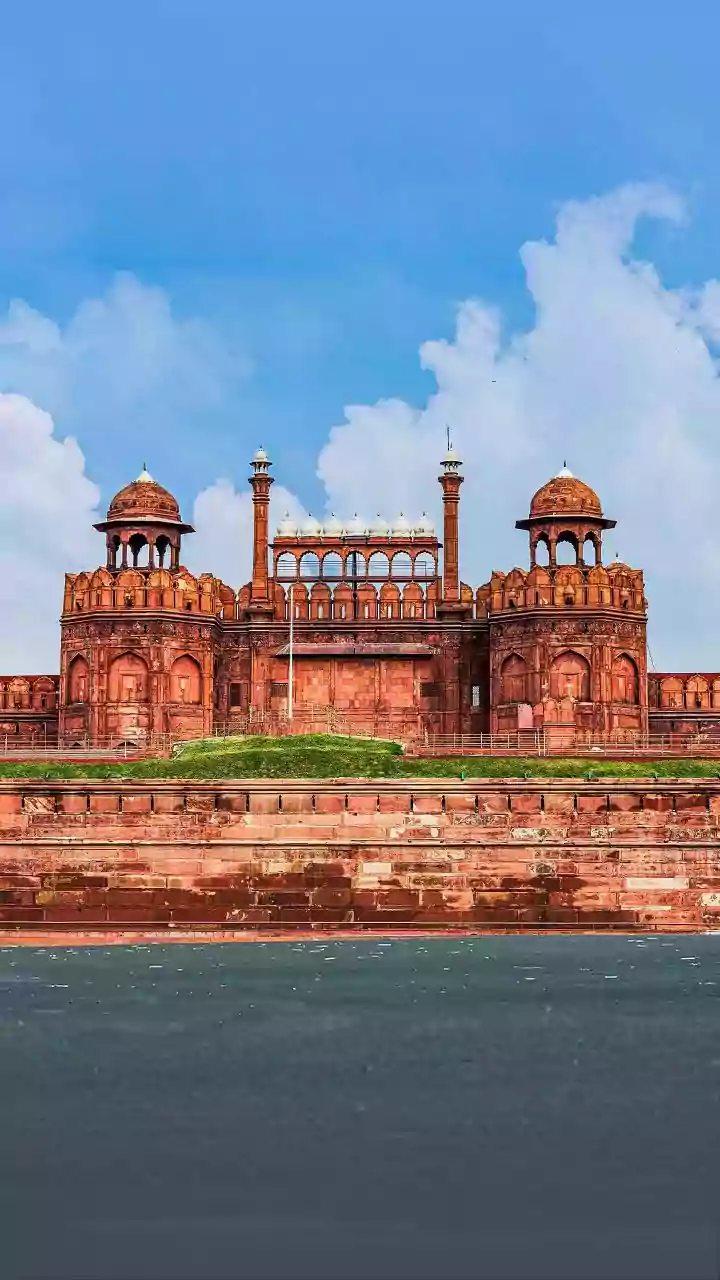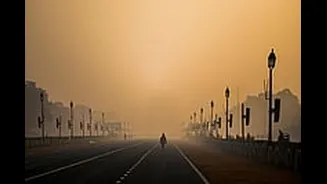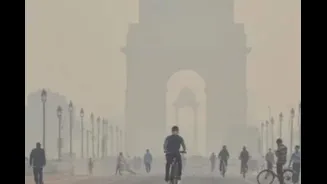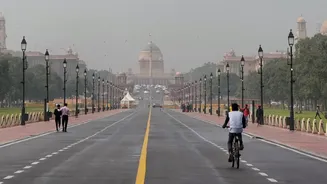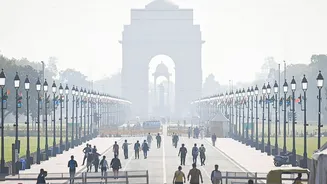Alarming Air Quality
Delhi's air quality took a hit post-Diwali, reaching 'Severe' levels, with the AQI peaking at 451. This surge, mainly due to firecracker emissions, indicates
significant health risks for inhabitants and nearby regions. The AQI scale defines the severity: 0–50 is 'Good', 51–100 is 'Satisfactory', 101–200 is 'Moderate', 201–300 is 'Poor', 301–400 is 'Very Poor', and 401–500 is 'Severe'. Several monitoring stations recorded alarming AQI figures, with Ashok Vihar at 445, Anand Vihar at 440, Wazirpur at 435, and Dwarka at 422, all well within the 'Severe' category. This year's situation is a notable increase from the previous year, which recorded an average post-Diwali AQI of 359, categorized as 'very poor'.
Health Risks Loom
The 'Severe' air quality poses major health hazards, particularly for sensitive groups. Children, elderly individuals, and those with respiratory issues or heart conditions are at an elevated risk of severe health issues. These problems range from breathing difficulties to potential cardiovascular complications. The Commission for Air Quality Management (CAQM) had already implemented Stage II of the Graded Response Action Plan (GRAP) to combat anticipated pollution. However, the current conditions highlight the urgency of addressing pollution challenges. The India Meteorological Department (IMD) anticipates that weather conditions will prevent any quick improvements, as the absence of strong winds and temperature inversions are trapping pollutants near the surface, causing persistent smog.
Precautions to Take
To safeguard health during this period, residents and travelers should minimize outdoor exposure, especially for vulnerable individuals. The use of air purifiers and protective masks is advised when going outside. The primary pollutant driving these hazardous AQI levels is fine particulate matter (PM2.5), which poses serious health risks. It is advisable to utilize public transportation when possible and to keep windows closed during peak pollution hours, usually mornings and evenings. Post-Diwali, several Indian cities are struggling with poor air quality. For instance, cities such as Daryapur, Ballabh, Dharuhera, and Sonipat are at the forefront of this environmental challenge. New Delhi is also among the most polluted cities, with an AQI of 308+.
For Travelers and Visitors
Travelers visiting Delhi or Northern India must be cautious. Outdoor activities like sightseeing, open-air market visits, and morning tours may present health risks. Visitors should check daily AQI updates, wear N95 or PM2.5-rated masks, and limit outdoor activities during peak pollution periods. It is recommended to choose indoor cultural experiences, such as museums or shopping centers, until air quality improves. The data from real-time monitoring reveals the top 10 most polluted cities in India. Places like Daryapur and Ballabh have PM2.5 concentrations exceeding WHO recommendations by over 100 times, creating health hazards. Prolonged exposure to poor air can exacerbate conditions such as asthma, bronchitis, and heart disease, while also increasing the likelihood of respiratory infections. It's crucial for visitors to be informed and proactive to minimize health impacts.




